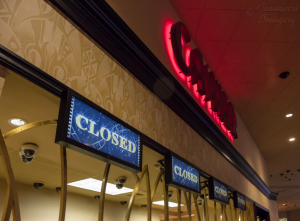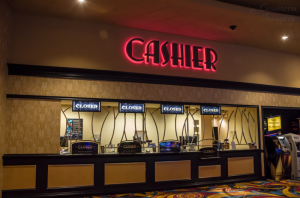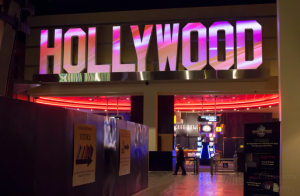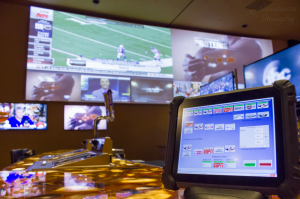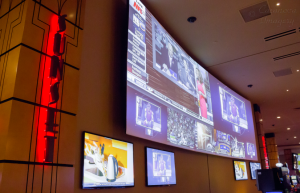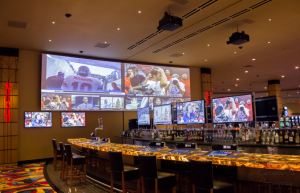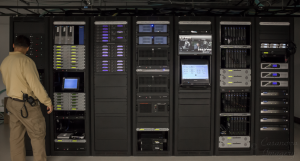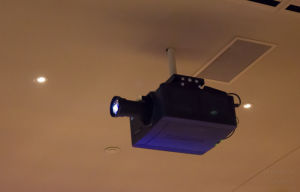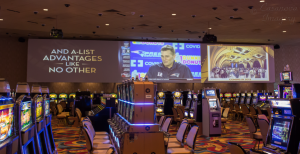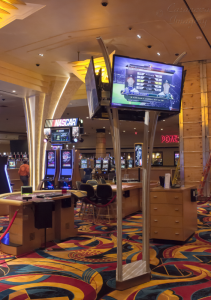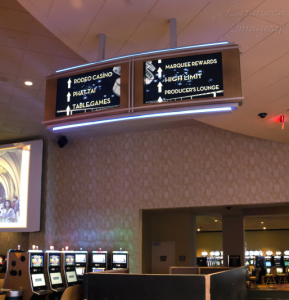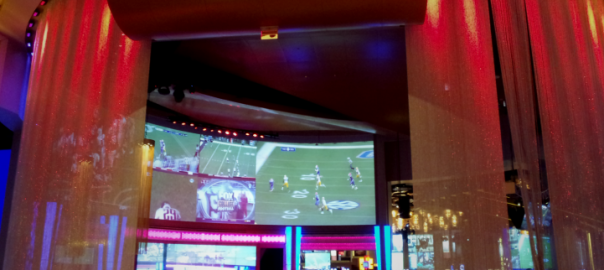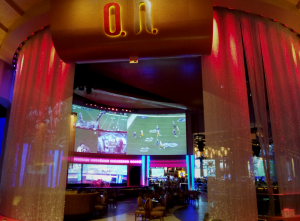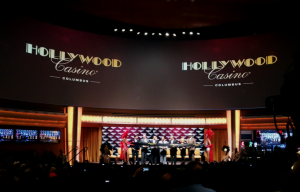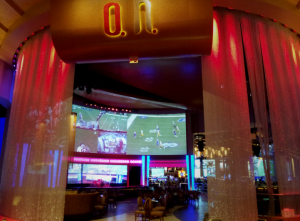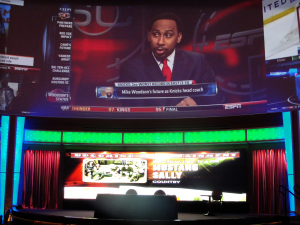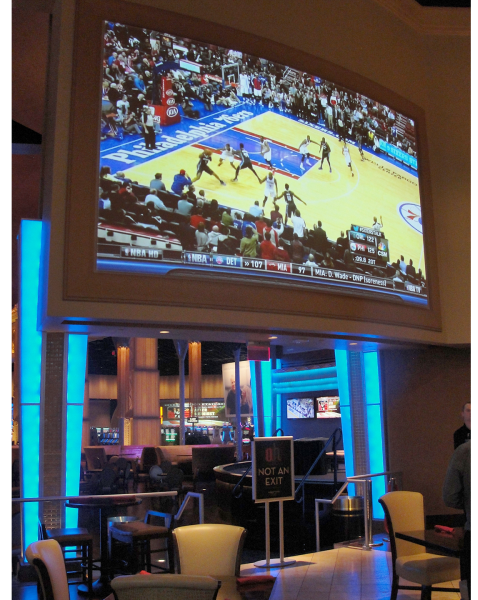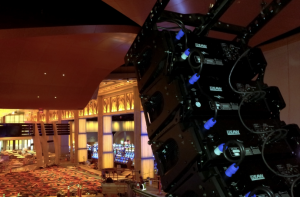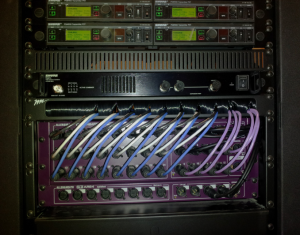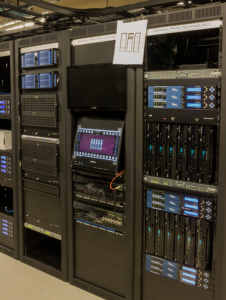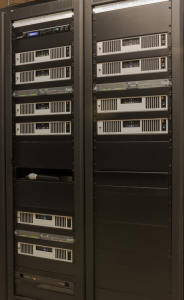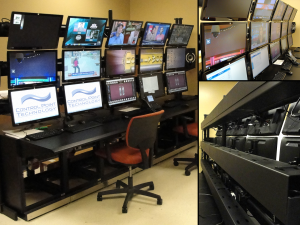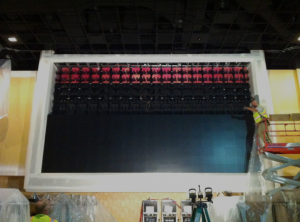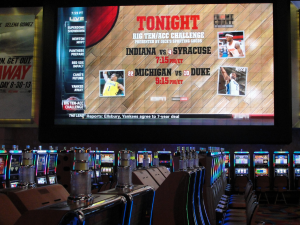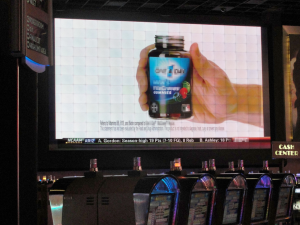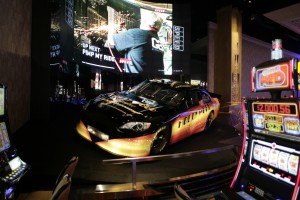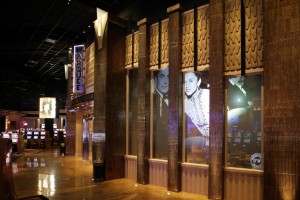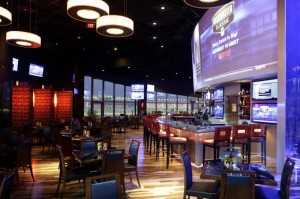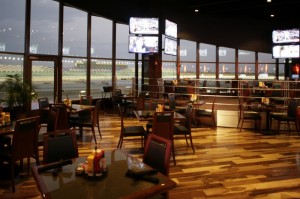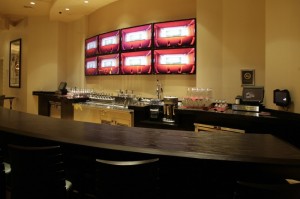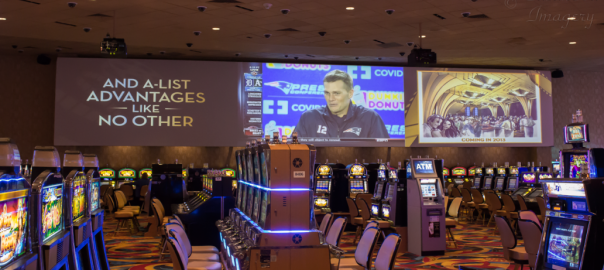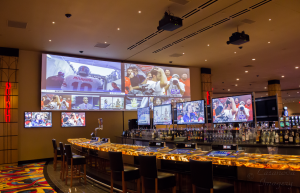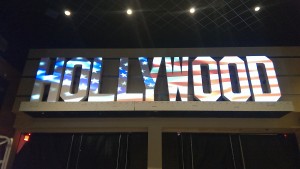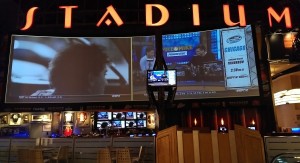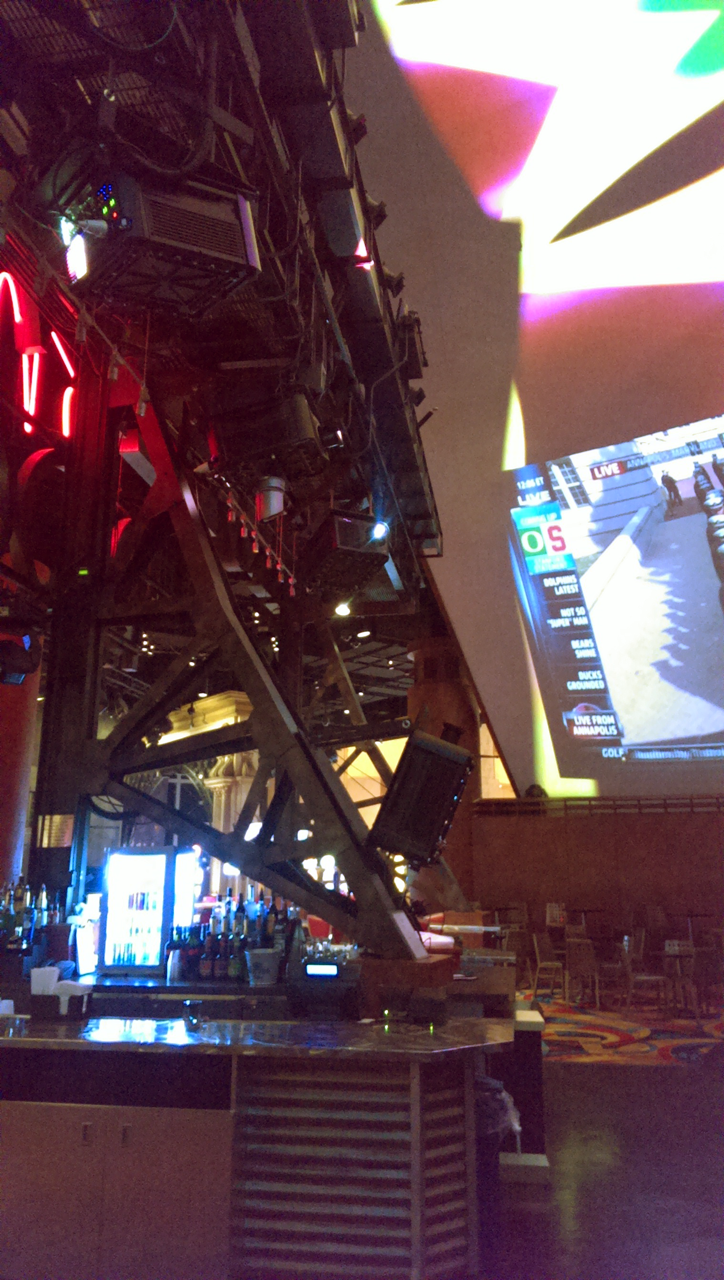 One of the features that stands out at the Hollywood Casino at Penn National Race Course, is the 90 foot wide quarter-spherical domed projection screen at the “Hollywood on the Roof” lounge. The projectors are suspended under a catwalk in a Left, Center, Right arrangement covering the majority of the screen, with an additional projector shooting vertically to cover the upper portion of the dome. The property owners opted to replace the four existing projectors in order to breathe new life into the space.
One of the features that stands out at the Hollywood Casino at Penn National Race Course, is the 90 foot wide quarter-spherical domed projection screen at the “Hollywood on the Roof” lounge. The projectors are suspended under a catwalk in a Left, Center, Right arrangement covering the majority of the screen, with an additional projector shooting vertically to cover the upper portion of the dome. The property owners opted to replace the four existing projectors in order to breathe new life into the space.
Control Point recommended installing new Christie J Series projectors to make full use of the unusual canvas. Once the first projector was in place, the full impact of the Christie projectors could be seen and it was clear that the Hollywood Casino was going to be pleased with the product. After the physical installation, the individual images were warped to conform to the dome’s curve, then edge-blended to create a smooth transition from each of the matched images. The finished product provided the high luminance needed to allow Hollywood’s digital artist to use more contrast in the creation of new imagery. Deeper, darker, more saturated colors help to form more visually intriguing content while the brightness makes the digital art, sports, and video really pop.
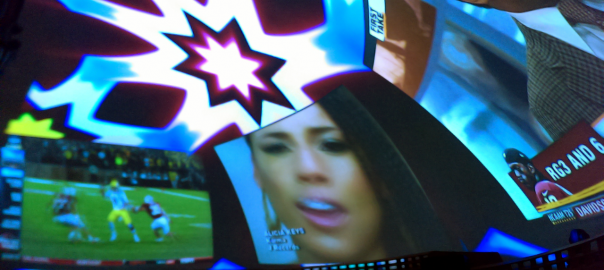
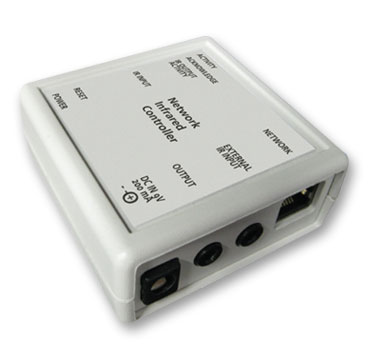 Description
Description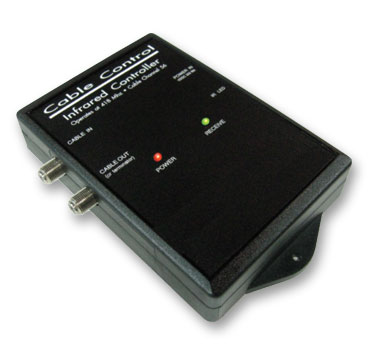 Description
Description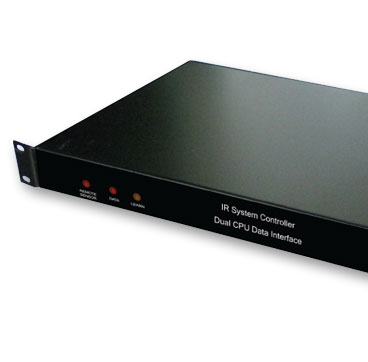 Description
Description